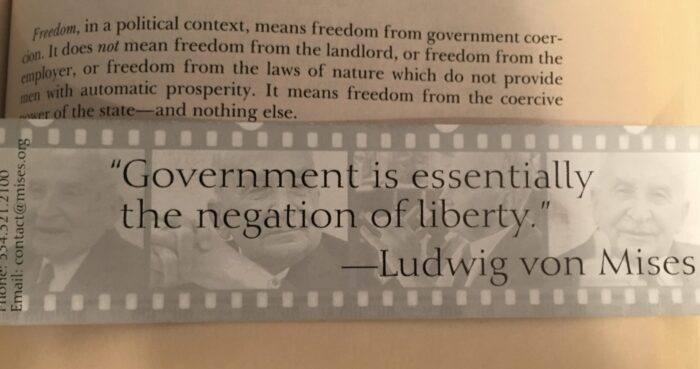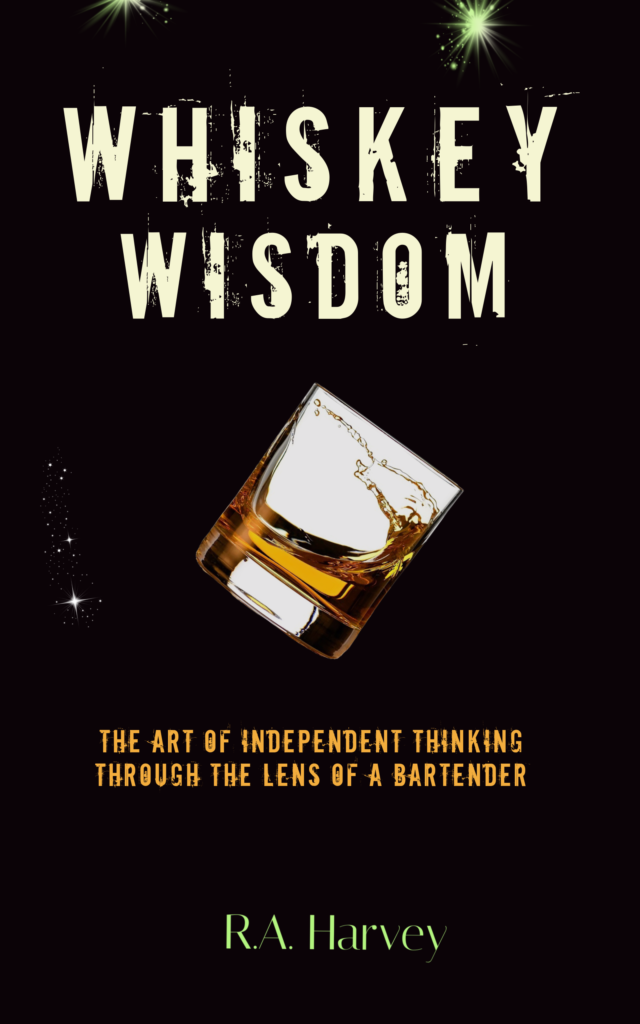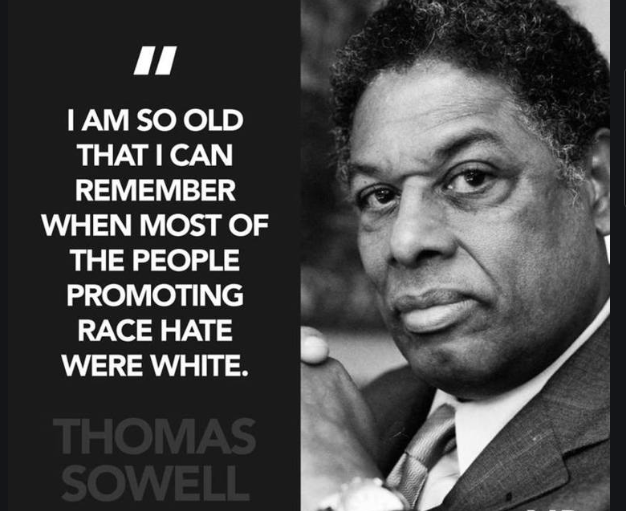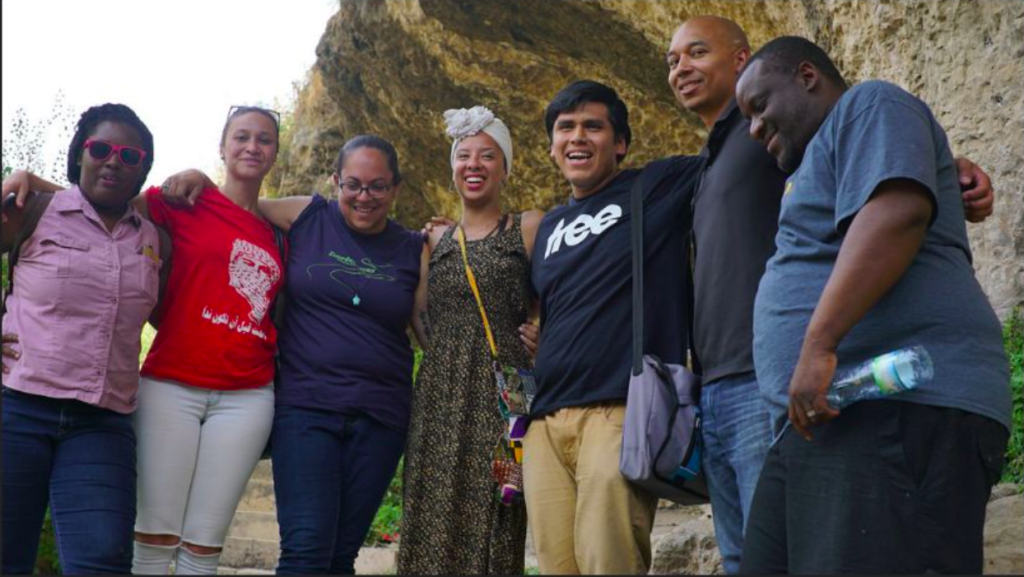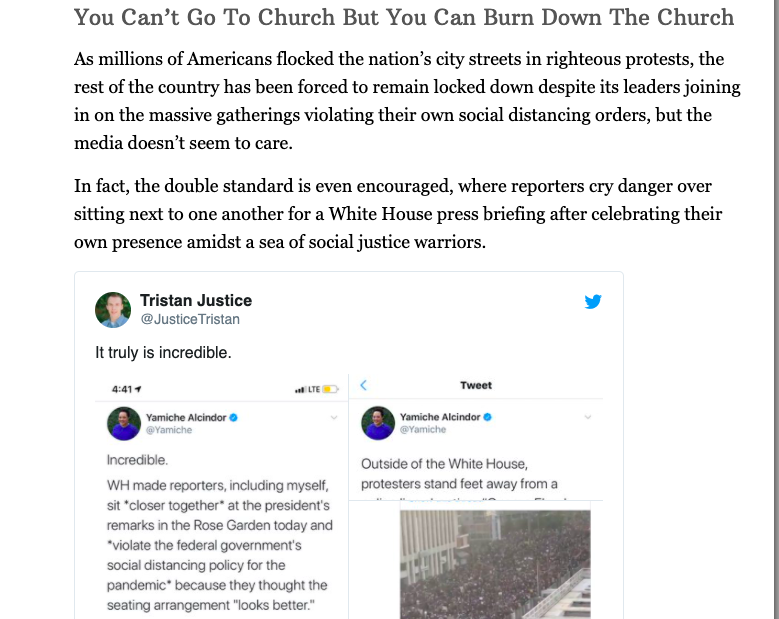UPDATE: THIS ARTICLE APPEARED TODAY IN THE POST-MILLENNIAL:
Black Lives Matter protester and journalist filmed assaulting Trump-supporters on Saturday in Washington, DC, Brittany S. McAlister, 29, of Washington, DC, was caught on viral video assaulting at least two individuals. She is a third-year journalism student at Howard University and works as a freelance journalist.
The first assault caught on video later retweeted by President Trump, McAlister kicked an unconscious man on the ground after he was sucker-punched by Kenneth Wayne DeBerry, who was arrested and charged. She was holding a camera at the time.
The Post Millennial has identified a Black Lives Matter protester and journalist filmed assaulting Trump-supporters after the “Million MAGA March” on Saturday in Washington, DC
Brittany S. McAlister, 29, of Washington, DC, was caught on viral video assaulting at least two individuals. She is a third-year journalism student at Howard University and works as a freelance journalist.
McAlister kicked an unconscious man on the ground after he was sucker-punched by Kenneth Wayne DeBerry, who was arrested and charged. She was holding a camera at the time.
Soon after, she sprinted up behind a woman carrying an American flag and punched her in the head before running away.
Earlier in the day, far-left group Refuse Fascism had profiled the D.C. social-justice activist in a now-deleted tweet. McAlister gave a speech against Trump and his followers at Black Lives Matter Plaza.
McAlister was active on social media but has deactivated and deleted all her known accounts after videos of the assaults went viral. She also removed her personal website where she described herself as a “freelance backpack journalist” who runs the magazine, Pawzels.
She has yet to be arrested. The Metropolitan Police Department did release a photo of McAlister, soliciting tips from the public to identify her.

This is important.
I’ve written the following, complete with video footage, because it is urgent and vital that people have some real idea of what they’re backing when they back today’s political left, which has become dominated by an ideology of mindlessness and hatred, an ideology of force and coercion over consensual voluntary human action and goodwill among all people.
A study conducted by the left-leaning Center for Policing Equity reveals that police are 42% less likely to use lethal force when arresting black people than when arresting whites. Yet, the authors of this study buried that data on the 19th page of a 29-page report. Then, the Washington Post cited this report as proof that police are more likely to kill blacks than whites and that “there is no correlation between violent crime and who is killed by police officers.”
Other facts about murder rates, unsolved murders, and interracial murders all point to the same conclusion: the allegation of systemic violence by whites and police against people of color is false [my emphasis].
(Source)
FBI statistics corroborate this.
Numerous other studies confirm it as well.


The political left, who once, many decades ago, believed (at least nominally) in freedom of speech, no censorship, peace, love, rock-and-roll, free expression, has now become this:
WARNING: CONTAINS GRAPHIC BLM/ANTIFA VIOLENCE. THIS VIDEO IS FROM YESTERDAY:
Feel the Tolerance — and note the BLM lady steals his phone after he’s knocked unconscious
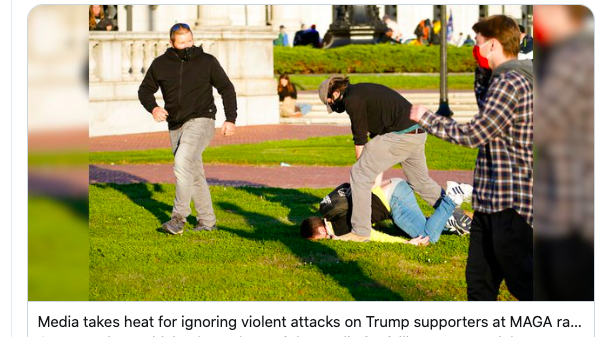



If, like me, you’re not a Donald Trump fan and yet, totally unlike me, you see nothing really wrong with any of the above, or even if you don’t espouse the violence but still kind of sort of sympathize with these mindless BLM/ANTIFA hordes, you are off-the-rails. You’re horrifyingly wrong. You’re the problem. The instigation of force is always wrong. The suppression of freedom — religious freedom, political freedom, economic freedom, freedom of speech and expression, even when you disagree with it — is wrong. You are on the wrong side of the issue — and more: you are on the wrong side of history, the wrong side of philosophy and ethical inquiry, critical inquiry, and you are disastrously, appallingly, devastatingly in error.
And just for the record: I support these comparatively peaceful Trump marchers astronomically more than I support these mindless violent BLM/ANTIFA nihilists. These are people propelled by blind support of ideas and an ideology they do not remotely comprehend, and the exclusively economic component of which is impossible — doomed by mathematical law to fail. In light of this, I ask you to consider for a moment, in all sincerity, the blind rage driving them — and all this over a dogma they don’t begin to understand.
That dogma is called Critical Race Theory.
Critical Race Theory evolved out of the 1930’s Frankfurt School ideology called Critical Theory, which was, as it described itself, a “social theory … a Marxist-Hegelian critique of society and culture [seeking] to reveal and challenge power structures.”
Critical Race Theory uses these same terms to described itself but adds this: “Racial power structures, especially white supremacy and the oppression of people of color.”
This “power-structure paradigm” comes directly from Karl Marx, who himself obsessed over “economic power structures” – who, indeed, could not get over the fact that when individuals are left alone, alone and free to exchange voluntarily with other individuals who are also acting voluntarily and consensually, many among them will through this voluntary process grow wealthy. Their work and focus and effort may very likely, in fact, bring them excess capital, which they can save or reinvest, and as a result of which, they will often become even wealthier.
Neither could Karl Marx quite get his head around the idea that in a free society, wherein all exchange is voluntary and consensual, the determining factor of the success of any and all businesses, no matter how small or large the business may be, is always the consumer, who either will or will not pay money for the goods or services being offered. As long as a society remains free and voluntary, the consumer is the one solely in control — because the consumer can choose to shop here or there or not at all.
“According to the Marxian view,” wrote the economist Ludwig von Mises, “human society is organized into classes whose interests stand in irreconcilable opposition.”
This Marxian view is now sometimes known as the “conflict doctrine,” which stands in stark contrast to the classical-liberal doctrine known as the “harmony doctrine” (or “harmony principle”), which I fully and unequivocally espouse and am prepared to prove to you.
In a society where human cooperation and coordination is voluntary, all rights-respecting individuals are allied.
Classical-liberal thinkers, like Carl Menger, Eugene Böhm-Bawerk, von Mises, Friedrich von Hayek, and many others, long ago successfully refuted the conflict doctrine – demolished it, in fact – and they did so by codifying and detailing specifically the ways in which business-owners, investors, and workers in free societies are not pitted against one another but the opposite: they’re natural allies in a vibrant and harmonious system. Which is one of the many reasons a leading Marxist scholar famously told the New Yorker Magazine, in the mid 1990’s (and I quote):
“Ludwig von Mises was right all along.”
Critical Race Theory — and all the privilege-and-fragility jargon that goes with it — does not know any of this.
Because Critical Race Theory inherited the conflict-doctrine from its ideological predecessor, which in turn inherited the conflict-doctrine from Karl Marx, Critical Race Theory, like Critical Theory before it, isn’t aware at all of the crushing refutations that knock the legs out from under their entire ideological worldview.
I’m not exaggerating. The truth is that if people knew how monumentally wrong CRT (like CT before it) actually is, they’d not only faint from shock: they’d likely never make a full recovery. That is the danger of dogma.
In addition to this, Critical Race Theory stands ideologically opposed to the Civil Rights Movement, which believed in equality of rights and thus stressed the importance of treating each person as an individual, as against some unthinking cog in a racial collective.
“I look to a day when people will not be judged by the color of their skin, but by the content of their character,” said Martin Luther King, stirringly.
I do too.
Critical Race Theory, on the other hand, is concerned not with individuals and the “content of their character,” but rather with “inequalities of outcome,” which, as you have no doubt already guessed, are the result of “racial power structures.”
Every person should know at the very least that Critical Race Theory and its ideologues are racist to the core – by definition – and not only that: they’re racist in the most insidious way possible because they masquerade as something non-racist, and would have the rest of the world believe that this were true.
As one self-described “Raceologist” and Racial Theorist recently put it: “I need White people to understand that all White people are racist.”
Critical Race Theory, baseborn and misbegotten from the outset — and history will, you may depend upon it, cause future generations to wince at these CRT theories — would in all sincerity have you believe that it can know the contents of every single individual human brain who has white skin, yet without ever seeing or knowing the person in any way at all. I ask you to pause a moment and process that.
This warped ideological belief, which is taught in public schools all across the world and taken totally seriously, is what enables Critical Race Theorists to lecture you and me with a straight face about racism, while simultaneously telling us that an entire race of humans is racist not because of the contents of their minds, but because of their skin color.
If you don’t see the horrifying ideological contradiction contained in that one thing alone, I urge you to reread it.
Contrast this ideological perspective and worldview with the “harmony doctrine” — knowing at the same time how successful the harmony doctrine has been and still is in anti-discrimination movements, at which it’s aimed laser-like to abolish inequality under the law: from feudal serfdom, to slavery, to Jim Crow.
Yes, the harmony doctrine has succeeded. It didn’t happen overnight, and the work is not completed, but nothing else can even compare. Nothing else can or will end discrimination.
Indeed, one of the greatest abhorrences (and that’s saying a lot) contained within Critical Race Theory — an abhorrence which has gone largely unnoticed – is that in promoting and pushing for violence and riots and looting, because, in their words, “the Civil Rights protests didn’t work,” it in so doing completely ignores how overwhelmingly successful the Civil Rights protests were. In ignorning this and pushing simultaneously for more violence and looting, they spit into the faces of people like Martin Luther King and Rosa Parks and many, many other heroes, whose principled stand and rational ideas won out and will continue to win out, even in spite of these CRT racists advocating violence and injustice.
Racial theorists are also inexplicably unwilling to denounce and condemn the countries and Marxist regimes in our present-day which continue to practice slavery:
There are 167 countries that still have slavery, affecting about 46 million people.
While over a hundred countries still have slavery, six countries have significantly higher numbers:
India (18.4 million)
China (3.4 million)
Pakistan (2.1 million)
Bangladesh (1.5 million)
Uzbekistan (1.2 million)
North Korea (1.1 million)
India has the highest number of slaves in the world at 18.4 million slaves. This number is higher than the population of the Netherlands and is approximately 1.4% of India’s entire population. All forms of modern slavery exist in India, including forced child labor, forced marriage, commercial sexual exploitation, bonded labor, and forced recruitment into non-state armed groups.
China has the second-highest number of slaves at 3.4 million, which is less than a quarter of India’s.
Other countries that have significantly high slave populations are Russia, Nigeria, the Democratic Republic of Congo, Indonesia, Egypt, Myanmar, Iran, Turkey, and Sudan.
Why?
Why are Critical Race Theorists so deafeningly silent on the subject of present-day slavery, the practioners of which are so often Marixst or Neo-Marxist?
Here’s one possible explanation:
“We are trained Marxists,” #BlackLivesMatter cofounder Patrisse Cullors said.
And quoting the official #BlackLivesMatter mission statement:
• “A progressive restructuring of tax codes at the local state, and federal levels, to ensure a radical and sustainable redistribution of wealth”
• “Reparations … in the form of a guaranteed minimum livable income”
• “Reparations … in the form of corporate and government reparations … and ensuring our access and control of food sources, housing and land”
• “Reparations … in the form of mandated public school curriculums that critically examine the political, economic, and social impacts of colonialism and slavery, and … the recognition and honoring of our collective struggles and triumphs”
• “Federal and state job programs that specifically target the most economically marginalized”
• “Real, meaningful, and equitable universal health care”
• “A constitutional right at the state and federal level to a fully-funded education”
Also the following, written right after the homophobic, murderous dictator Fidel Castro died, appeared on a BLM platform.
“We are feeling many things as we awaken to a world without Fidel Castro. There is an overwhelming sense of loss, complicated by fear and anxiety. Although no leader is without their flaws, we must push back against the rhetoric of the right and come to the defense of El Comandante.”
The article continues:
“Revolution is continuous and is won first in the hearts and minds of the people and is continually shaped and reshaped by the collective. No single revolutionary ever wins or even begins the revolution. The revolution begins only when the whole is fully bought in and committed to it. And it is never over…. Revolution is rooted in the recognition that there are certain fundamentals to which every being has a right, just by virtue of one’s birth: healthy food, clean water, decent housing, safe communities, quality healthcare, mental health services, free and quality education, community spaces, art, democratic engagement, regular vacations, sports, and places for spiritual expression are not questions of resources, but questions of political will and they are requirements of any humane society.”
The article concludes with this eye-popper:
“With Fidel’s passing there is one more lesson that stands paramount: when we are rooted in collective vision when we bind ourselves together around quests for infinite freedom of the body and the soul, we will be victorious. As Fidel ascends to the realm of the ancestors, we summon his guidance, strength, and power as we recommit ourselves to the struggle for universal freedom. Fidel Vive!”
In light of all this explicit Marxist and Neo-Marxist ideology — propagandistic to the core and which is an inherent part of Critical Race Theory’s ideological inheritance — one cannot help but wonder if any of the proponents of Critical Race Theory have a good idea about how racist Karl Marx and Friedrich Engels were. (They were both horribly anti-Semitic, as well, but that would not bother a great many of the Critical Race Theorists.)
WARNING: The following quotes, which I find disgusting and reprehensible, contain a number of racial slurs. These are from the stated intellectual thought-leaders of today’s left, BLM and ANTIFA included. Let that sink in a moment — especially after you watch some of the video clips I’ve uploaded below.
“This splendid territory [the Balkans] has the misfortune to be inhabited by a conglomerate of different races and nationalities, of which it is hard to say which is the least fit for progress and civilization. Slavonians, Greeks, Wallachians, Arnauts, twelve millions of men, are all held in submission by one million of Turks, and up to a recent period, it appeared doubtful whether, of all these different races, the Turks were not the most competent to hold the supremacy which, in such a mixed population, could not but accrue to one of these nationalities” (Karl Marx, “The Russian Menace to Europe,” 1853).
“The Jewish nigger Lassalle who, I’m glad to say, is leaving at the end of this week, has happily lost another 5,000 talers in an ill-judged speculation. The chap would sooner throw money down the drain than lend it to a ‘friend,’ even though his interest and capital were guaranteed… It is now quite plain to me—as the shape of his head and the way his hair grows also testify—that he is descended from the negroes who accompanied Moses’ flight from Egypt (unless his mother or paternal grandmother interbred with a nigger). Now, this blend of Jewishness and Germanness, on the one hand, and basic negroid stock, on the other, must inevitably give rise to a peculiar product. The fellow’s importunity is also nigger-like” (Karl Marx, “Marx to Friedrich Engels in Manchester,” 1862).
“Tremaux proved that the common Negro type is the degenerate form of a much higher one … a very significant advance over Darwin” (Karl Marx, in a letter to Friedrich Engels, August 7, 1866).
“The expulsion of a Leper people from Egypt, at the head of whom was an Egyptian priest named Moses. Lazarus, the leper, is also the basic type of the Jew” (Karl Marx, letter to Friedrich Engels, May 10, 1861).
“Russia is a name usurped by the Muscovites. They are not Slavs, do not belong at all to the Indo-German race, but are des intrus [intruders], who must again be hurled back beyond the Dnieper, etc” (Karl Marx, letter to Friedrich Engels, June 24, 1865).
“The classes and the races, too weak to master the new conditions of life, must give way,” wrote Karl Marx, in a scarcely disguised espousal of genocide.
In his 1877 Notes to Anti-Dühring, Friedrich Engels elaborated his thoughts on the subject of race, saying “that the inheritance of acquired characteristics extended … from the individual to the species…. If, for instance, among us mathematical axioms seem self-evident to every eight-year-old child and in no need of proof from evidence that is solely the result of ‘accumulated inheritance.’ It would be difficult to teach them by proof to a bushman or to an Australian Negro.”
“I have learned a great deal from Marxism, as I do not hesitate to admit,” wrote Adolph Hitler.
As one journalist recently explained it:
With the rise of Critical Race Theory, the cause of racial justice became more influenced by the fixations on conflict, discord, and domination that CRT inherited from Marxism. Social life was predominantly cast as a zero-sum struggle between collectives: capital vs. labor for Marxism, whites vs. people of color for CRT.
Just as Marxism demonized capitalists, CRT vilifies white people. Both try to foment resentment, envy, and a victimhood complex among the oppressed class it claims to champion.
Traditional Marxists claimed that all capitalists benefit from the zero-sum exploitation of workers. Similarly, CRT “diversity trainers” require [i.e. force] white trainees to admit that they “benefit from racism.”
Traditional Marxists insisted that bourgeois thoughts were inescapably conditioned by “class interest.” In the same way, CRT trainers push the notion that “virtually all White people contribute to racism” as a result of their whiteness.
(Source)
One of America’s greatest propagandists, Barack Obama, and his media lapdogs still tirelessly propagandizing:

I close with this data, from a non-partisan source:
Twelve cases cited by the New York Times occurred over 21 years and amount to roughly one out of every 27,000 murders committed over this period. Like the Times editorial, virtually every major media outlet repetitively focus on just a few of the 15,000 murders and 6.9 million violent crimes that are committed per year in the U.S.—particularly those with the potential to stir racial strife. The same outlets then use these cases, which amount to a minuscule fraction of all violence, to spread false, sweeping narratives.
Such journalism exploits the statistical fact that anecdotes can be highly deceitful and the psychological fact that people are easily misled by them because it’s easier to grasp stories than data. It also disregards the Times own news and editorial standards, which claim that “we tell our readers the complete, unvarnished truth as best we can learn it.”
The same Times editorial claims that “racial inequality remains rampant” in “enforcement of the law,” but the comprehensive facts of this matter reveal just the opposite. As documented in a 2018 paper in the journal Social Psychological and Personality Science:
“The most common means of testing for racial disparity in police use of deadly force is to compare the odds of being fatally shot for blacks to the odds of being fatally shot for whites.”
That common approach is misleading because it uses the false assumption that white and black people commit life-threatening crimes at the same rates.
The cogent way to analyze this issue is to compare the odds of being fatally shot to each race’s “involvement in those situations where the police may be more likely to use deadly force.”
Based on four different national datasets on “murder/nonnegligent manslaughter, violent crime, and weapons violations,” “in nearly every case, whites were either more likely to be fatally shot by police or police showed no significant disparity in either direction.”








